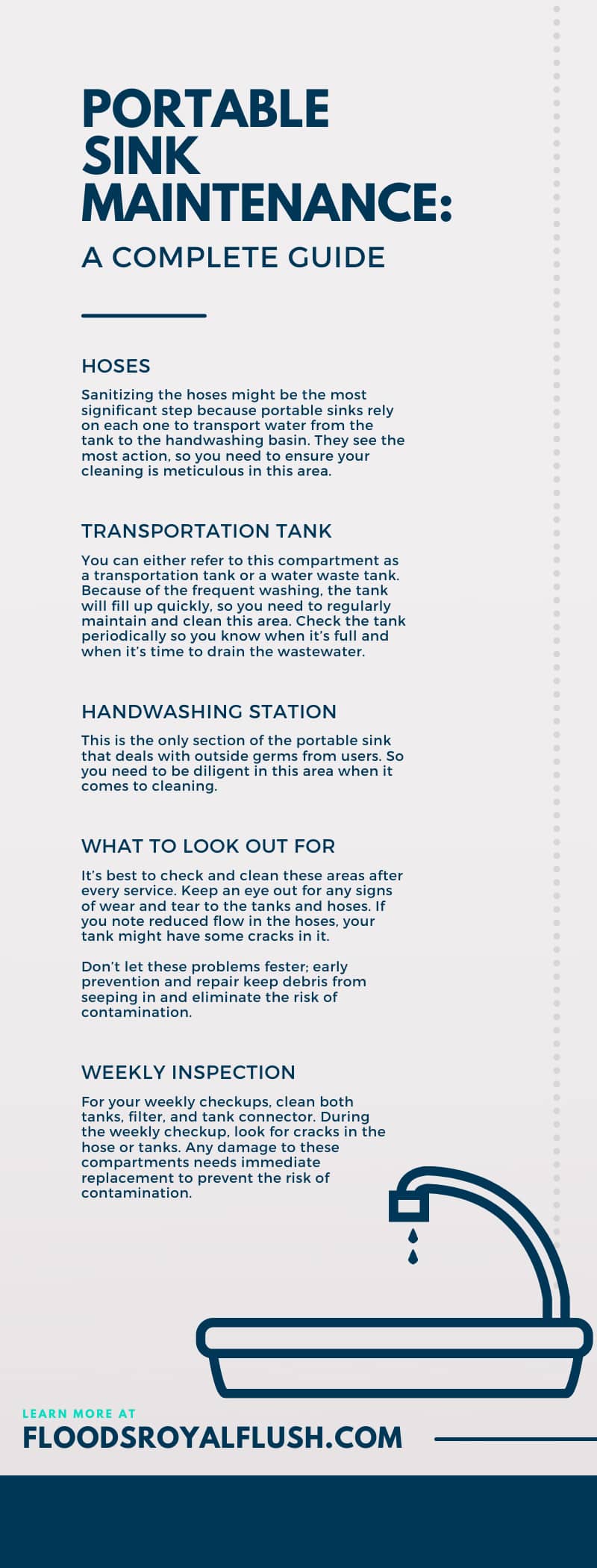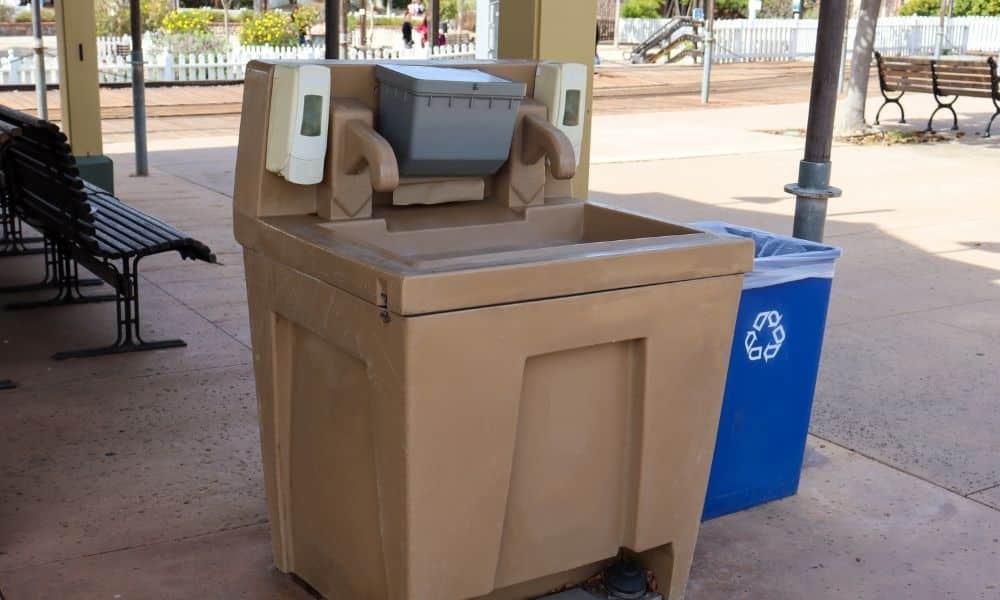Whether or not you require a portable bathroom for work or social events, you need a portable sink to accompany it. The sink further helps to ensure the cleanliness and hygiene upkeep of its users. Besides, bathrooms just aren’t complete without a sink. So why should you exclude an outdoor restroom from the same treatment? A portable sink is a great addition to your portable restroom, but you need to know about its upkeep and maintenance to keep it in working condition.
What To Clean
For portable sinks, you need to stick to a strict maintenance and cleaning schedule. After every use, they need regular cleaning and frequent inspections to ensure proper usage. Without following these guidelines, you will encounter serious problems and risk damage beyond repair to your portable sink.
Before you get started on the cleaning process, you need to arm yourself with the essential cleaning and sanitation tools:
- Buckets
- Brushes/towels
- Household bleach
- Water solution
- Disinfectant soap
- Pumping wand
- Chlorine test strips
- Chlorine bleach
Hoses
Sanitizing the hoses might be the most significant step because portable sinks rely on each one to transport water from the tank to the handwashing basin. They see the most action, so you need to ensure your cleaning is meticulous in this area.
Dedicate each hose for a different function and ensure none of them have crossed lines to prevent contamination. Only one hose should transport water to the tank from the faucet. Never swap out or trade off specific functions, and always remember to securely cap the ends of each hose to prevent contamination.
When you sanitize your transfer hoses, use a 10 percent household bleach and water solution to flush it through. You’ll want to do this regularly, as it will prevent any sort of buildup.
You need a separate hose that transfers water into the handwashing station, but you can perform the same cleaning tactic for this hose. During every use, keep the caps secured on each hose.
Transportation Tank
So if portable sinks use the hoses to transport water for different functions, where exactly does that transportation process take place? You guessed it: the transportation tank. Naturally, this area is the next item on your agenda to clean.
You can either refer to this compartment as a transportation tank or a water waste tank. Because of the frequent washing, the tank will fill up quickly, so you need to regularly maintain and clean this area. Check the tank periodically so you know when it’s full and when it’s time to drain the wastewater.
After you empty this compartment, thoroughly inspect the tank checking for signs of mold, algae, and any other buildup lining the walls. Even if you don’t spot any of these signs, pour the 10 percent household bleach and water solution into the tank fully.
Thoroughly slosh and disperse the cleaning solution throughout the tank. Leave the solution inside for about an hour. Fill up a bucket with fresh cool water and use this to rinse out the leftover solution and bleach.
Handwashing Station
Last on this list is the handwashing station. Portable handwashing station rentals see a lot of traffic. This is the only section of the portable sink that deals with outside germs from users. So you need to be diligent in this area when it comes to cleaning.
The basin catches soap subs and debris from all the handwashing activity. If you neglect regular sanitizing, you risk harmful bacteria buildup. First and foremost, you want to keep the water in the station sanitary. For every gallon of water, you need to add eleven drops of liquid chlorine bleach to neutralize the bacteria.
Next, you need your chlorine test strips. More than eleven drops will have everyone smelling the chlorine, but the strips help to ensure the safety of the water before usage. Use the strips to perform a chlorine PPM test and make sure the line stays between the five to ten range.
If you work on a construction site, you want to clean the station at the end of each day. Follow these steps to keep in line with health safety standards:
- Grab your disinfectant soap brush to scrub away any leftover soap scum, debris, and dirt from the freshwater tank.
- Use your brushes and towels to scrub and wipe down the outside surfaces (e.g., basin, faucet, pedals, and dispenser).
- Get the 10 percent bleach and fill the freshwater compartment.
- Pour about a quarter of the bleach and water solution through the pumps on the handwashing station and leave the solution in for an hour.
- Finally drain the tank and rinse it out with cool, fresh, clean water from your bucket.
What To Look Out For
Because your portable sink will experience frequent usage, you need to periodically check for any signs of damage to the different compartments. Kill two birds with one stone checking for damages when you clean and sanitize each section.
As previously stated, it’s best to check and clean these areas after every service. Keep an eye out for any signs of wear and tear to the tanks and hoses. If you note reduced flow in the hoses, your tank might have some cracks in it.
Don’t let these problems fester; early prevention and repair keep debris from seeping in and eliminate the risk of contamination. The purpose of the sink is to keep users’ hands clean. Contamination negates all these efforts.
Daily and Weekly Inspections
You save yourself a lot of work when you stick with a diligent and precise maintenance schedule. Implement a daily and weekly inspection routine.
Daily Inspection
Rinse and wipe down the basin and other outer surfaces of the portable sink. Because this is the most frequent cleaning schedule, you can stick with nonabrasive cleaning products. Empty and check the wastewater tank to prevent sediment buildup.
Weekly Inspection
For your weekly checkups, clean both tanks, filter, and tank connector. During the weekly checkup, look for cracks in the hose or tanks. Any damage to these compartments needs immediate replacement to prevent the risk of contamination.
Here at Flood Royal Flush, we offer more than just this complete guide for portable sink maintenance. We also offer pristine sinks in perfect working condition. So shop with us to ensure the health and safety of your users.



